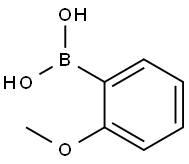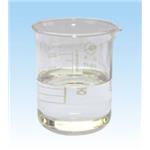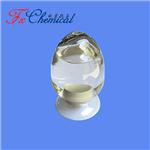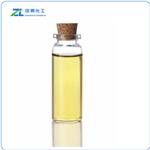Chemical Properties
Guaiacol appears as white or slightly yellow crystals or colorless to light yellow transparent oily liquid. It has a distinctive scent. It is slightly soluble in water and benzene, also easily soluble in glycerol. And it is miscible with ethanol, ether, chloroform, oil and glacier acetic acid. Guaiacol is a phenolic natural product first isolated from Guaiac resin and the oxidation of lignin. It is also present in wood smoke, as a product of pyrolysis of lignin.
Occurrence
Detected in the distillation product from guaiac resin; guaiacol is found in castoreum oil, in the essential oil from fowers of Pandanus odoratissimus L , in the distillation waters of orange leaves, in the essential oil of Ruta Montana L and in the essential oil of tobacco leaves Also reported found in lemon peel oil, bog blueberry, asparagus, cabbage, celery, onion, chive, tomato, peppermint oil, rye bread, Parmesan cheese, butter, smoked fsh, meats, barley, dried bonito, malt, hardwood smoke, cognac, beer, brandy, rum, whiskies, sherry, grape wines, cocoa, coffee, tea, peanuts, popcorn, soybeans, avocado, beans, mushroom, sesame seed, mango, tamarind, rice dill, licorice, corn oil, cuttlefsh and other sources
Uses
Guaiacol is a precursor of vanillin and santalidol (a synthetic sandal-
wood fragrance). it is obtained from wood tar by the destructive
distillation of hardwood, by the distillation of the phenol fraction
of coal tar, or through the use of o-dichlorobenzene. it is processed
to yield vanillin.
Uses
A phenolic natural product and reducing co-substrate for COX reactions.
Uses
Synthetic flavors, medicine (expectorant).
Definition
ChEBI: Guaiacol is a monomethoxybenzene that consists of phenol with a methoxy substituent at the ortho position. It has a role as an expectorant, a disinfectant, a plant metabolite and an EC 1.1.1.25 (shikimate dehydrogenase) inhibitor. It is functionally related to a catechol.
Preparation
Guaiacol can be obtained by diazotization and hydrolysis of anthranium anisole or obtained from fractionated of wood oil.
In the nature of guaiacol is presented in the guaiacum or pine oil. In the creosote oil obtained from wood dry distillation, guaiacol is the major ingredient. This product could be obtained through fractional distillation of creosote oil. Japan Osaka Refining Company takes o-nitrochlorobenzene as raw material, first synthesizes o-nitroanisole, and then reduces it to o-anisidine, and finally obtains the goods. China's production method is roughly the same. Ingredient consumption quota: 1250 kg / t of amino-containing anisole, 1500 kg / t of sulfuric acid (93%), 700 kg / t of sodium nitrite and 400 kg / t of copper sulfate.
Aroma threshold values
Detection: 3 to 31 ppb; aroma characteristics at 1.0%: phenolic, smoky, spicy, medicinal, vanilla, savory meaty, woody with a bourbon whiskey casky nuance.
Taste threshold values
Taste characteristics at 2.0 ppm: woody, phenolic, bacon, savory, smoky and medicinal.
General Description
Guaiacol is a colorless to amber crystals or liquid. Density (of solid) 1.129 g / cm3. Solidifies at 28°C (82.4°F), but may remain liquid for a long time even at a much lower temperature. Slightly water soluble . Soluble in aqueous sodium hydroxide. It is an agent thought to have disinfectant properties and used as an expectorant.
Air & Water Reactions
Sensitive to air and light (darkens). Slightly water soluble.
Reactivity Profile
Guaiacol may react with oxidizing materials. Guaiacol forms salts readily with bases.
Hazard
Toxic by ingestion and skin absorption.
Fire Hazard
Guaiacol is combustible.
Biochem/physiol Actions
Guaiacol, along with 2,4,6-trichloroanisole, is responsible for cork taint in wine. A method has been developed for extraction and quantitation of the two compounds.
Synthesis
Obtained from hardwood tar or synthetically from o-nitrophenol via o-anisidine.
Purification Methods
Crystallise guaiacol from *benzene/pet ether or distil it in a vacuum. [Beilstein 6 H 768, 6 IV 5563.]
Toxicity evaluation
LD50:900 mg / kg (rat, subcutaneous).
LD50: 3.7 mg / kg (rabbit, intravenously).
Oral administration of large amount can stimulate the esophagus and stomach, resulting in heart failure, collapse and death.





